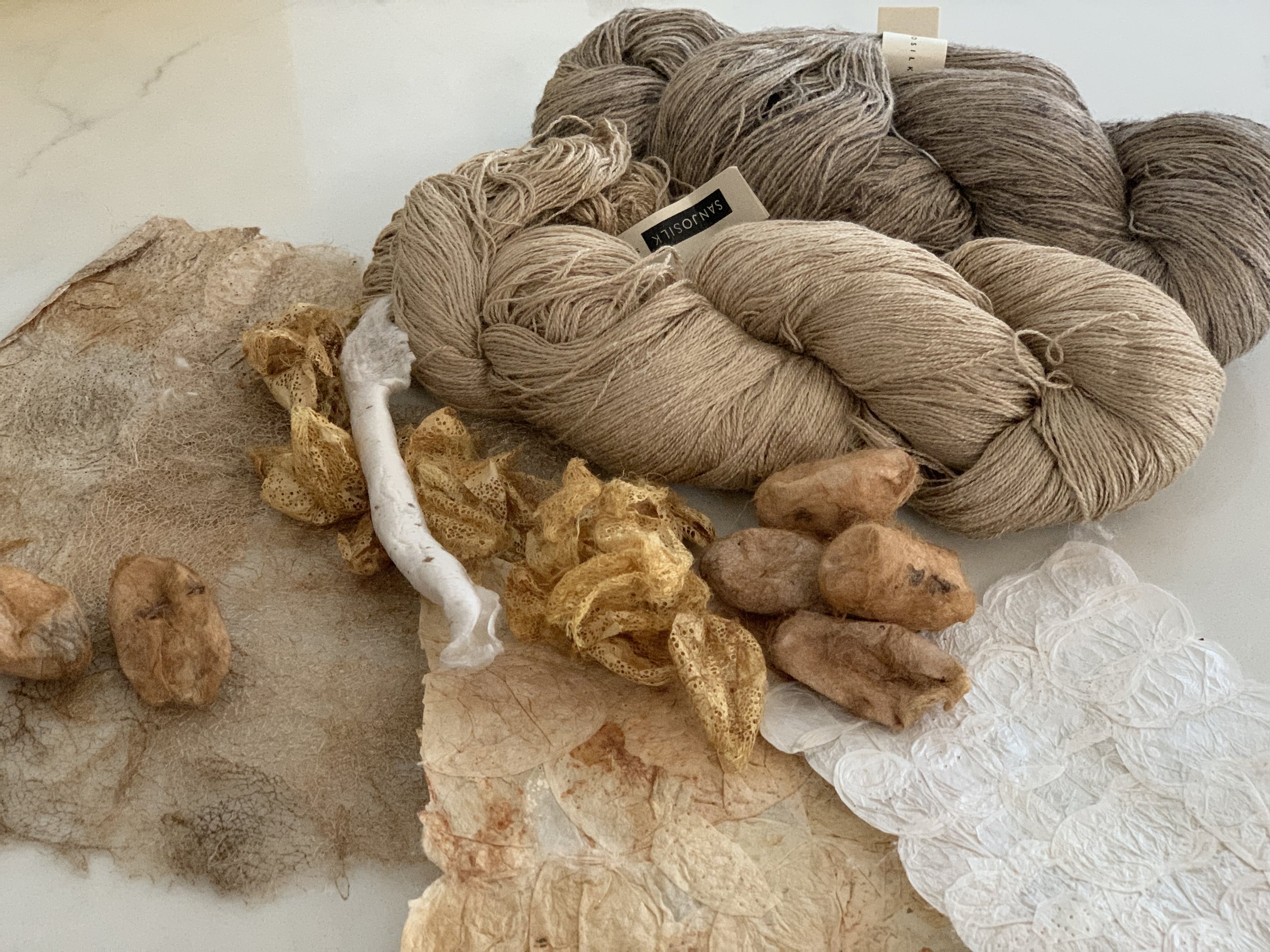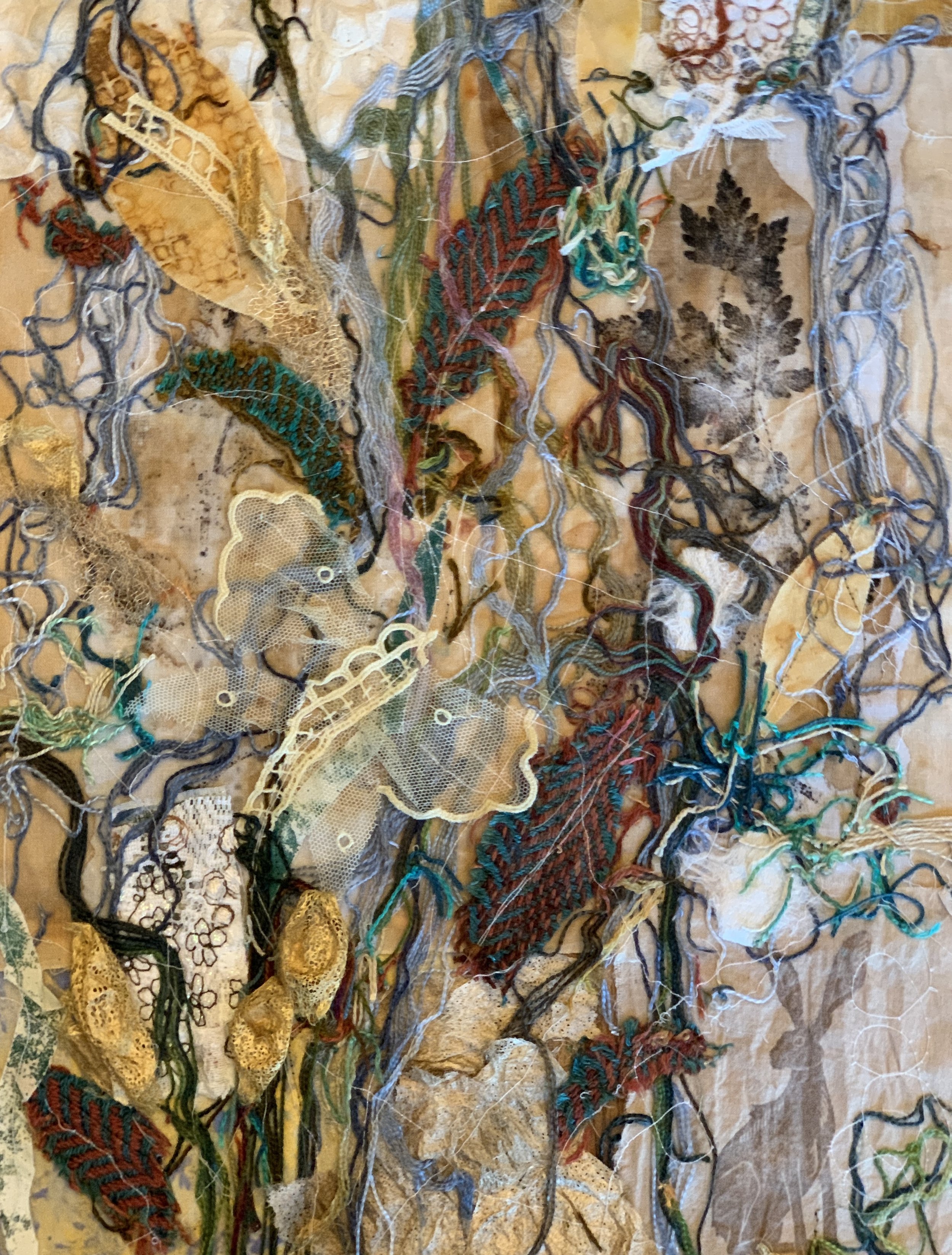Transformation…Silk Moth Emerges
Sometimes we make a piece of fabric and we are not quite certain what it will become! My earlier years focused on sewing fabric for clothing. I love weaving with tussah silk and my journey in gathering some tussah silk led me to Sanjo Silk, where I purchased some Muga Silk, gold cricula cocoons, and cocoon sheets. The cocoon sheets supported Sanjo Silk’s Madagascar project: Sepali. To alleviate poverty for farmers, education in rearing indigenous silkworms has provided a new economy.
For some time, I had been planning on making a textile piece which used some of the many thrums I had been accumulating from various fibers. Some of the thrums are knotted as I often tie-on to a pre-existing warp when I weave.. I’ve never used a stabilizer before, but decided to experiment with Sulky stabilizer. I worked on creating a collage base with various eco-printed fabric, my painted fabric, the cocoon fabric, and lots of thrums! In lots of cases, I left gaps to create windows. Some of my handwoven scraps reminded me of leaves so I cut some leaf-shaped cutouts to incorporate as well into the collage.
I pulled out some old lace to cut up thinking it reminded me of a caterpillar at the moment and also a butterfly. I didn’t really know where I was headed in this exploration. The joy of creativity! The next step involved pinning and sewing the layers of the sandwich, which was not a quick process.
Never having done this before, I ran into a lot of tension issues and broke about five needles! At this point, I hoped that this work would turn out! The last step involved washing and it seemed like to Ultra Solvy rapidly disentigrated in my hands. The thrums seemed to be a hot mess!
Months went by and I wondered what I would do with this piece. I attended Convergence and nunofelted some sari silk to make a large piece of fabric. The wool layout took all afternoon using a fine merino wool pre-felt base from Australia and a thin layer of merino hand-dyed roving. Due to technical issues, I did not get even fulling so now I had yet another piece of large fabric.
Another month went by and I hadn’t made a decision what to do with either piece. I had workshops and guild programs coming up. I ended up using the nunofelt to upcycle a jacket, but that is a story for a different blog. Back to the transformation textile piece…I decided it needed some more color and pulled the sari silk off the beautiful felted underlayer and made some more leaves. The thrums needed stitching too. Although the stabilizer was helpful, I didn’t think it would survive years of hanging so with a needle, I hand couched and started working on sections at a time.
It turns out that my lace cutout was indeed a silk moth or “cricula.” A quick study of the silkmoth and it’s habitat helped me to think about how it might show up better in this textile piece. Using some rust-dyed cloth and some silk, I created a subtle layer under the lace. It involved taking apart the machine-stitching originally holding the Ultra Silky to the lace. Earlier this year, I learned the art of trapunto stitching so I worked to add a silk and merino wool stuffing underneath prior to stitching.
Over time this fabric collage became a way of new thinking and new work for me…weaving, felting, sewing, and stitching. I was able to couch multiple ends of thrums together and gradually remove some of the machine stitching. I wanted the piece to be representative of my various fiber and art skills and techniques. The framing and representation of this piece also became important to me and I had to restitch so the fabric could be stretched.












